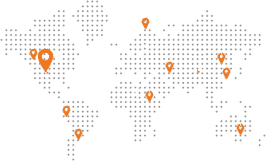International Journal of Mining and Geological Engineering, 4:111–127, 1986
Authors: H. N. Maleki and J. F. T. Agapito (AAI), and M. Wangsgard and J. Cort (Plateau Mining Company)
Results of instrumentation, test mining, and computer-aided stability analyses were combined to design the most stable gate road layout for two-seam longwall mining at the Plateau Mining Company. Five layouts were evaluated; these layouts used a combination of yield and/or large pillars with either three-entry or two-entry development systems. A layout which used a yield pillar within a two-entry development system resulted in the most stable gate roads for two-seam mining. Another layout using a yield and large pillar was shown to be most stable for single-seam mining of the top seam, but it was unsuitable for two-seam mining because of seam interaction problems. The size of the yield pillar was determined by satisfying several design requirements, as well as by limited test mining; test results showed good, medium-term stability for the yield pillars, with a possible need for rib control. It was shown that the yield pillars might be effective in controlling the floor heave, and could minimize interaction problems in two-seam mining.




